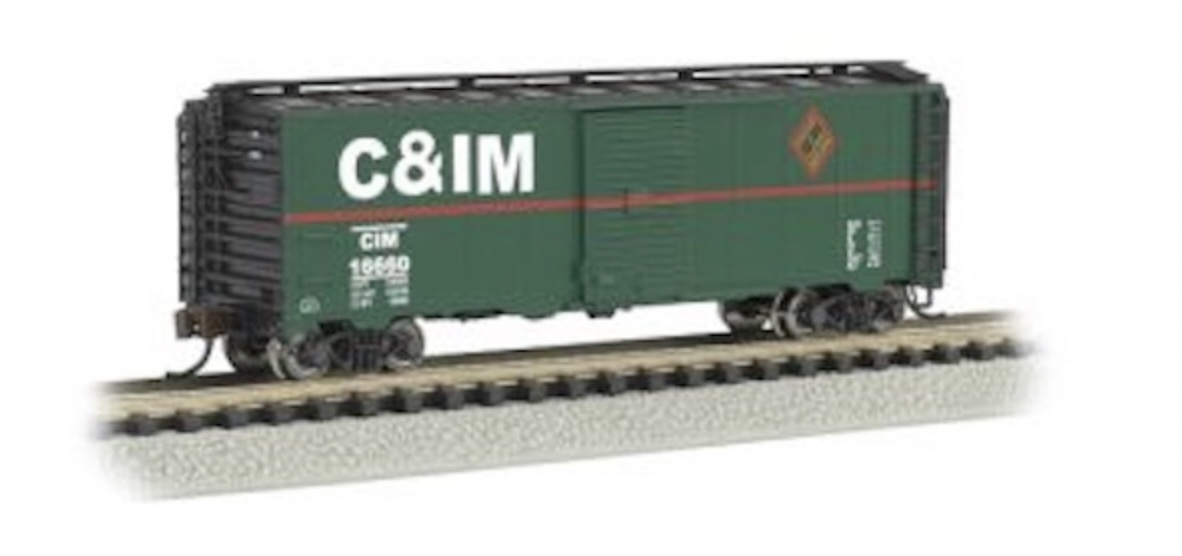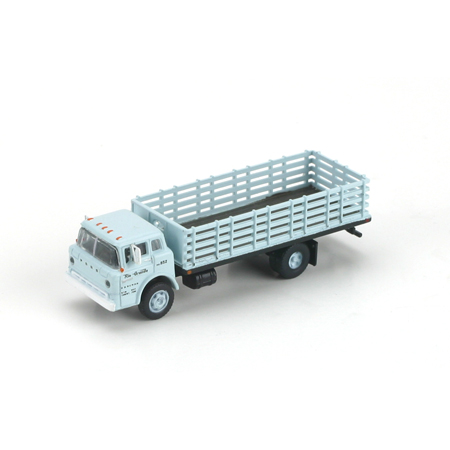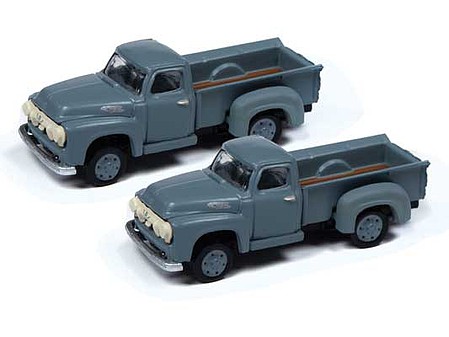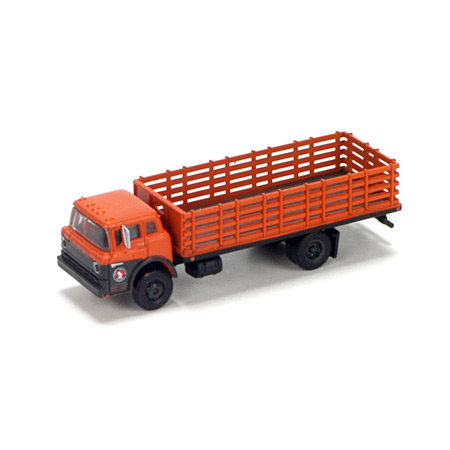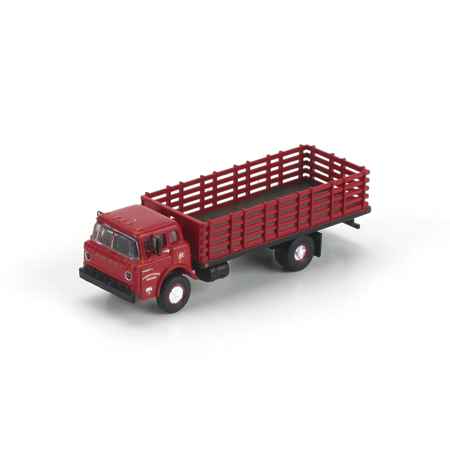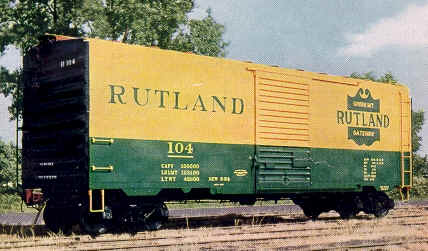Model Information: This is Bachmann's version of the ubiquitous PS-1 Boxcar.
Prototype History: The 40' Boxcar is widely known as one of the most popular freight cars used by railroads as they transitioned from steam to diesel. In particular the Pullman Standard or PS-1 design was one of the most popular and was widely used by North American railroads. These boxcars were built beginning in 1947 and share the same basic design, with certain elements such as door size, door style or roof type varying among the different railroads and production years. When production of these cars ceased in 1963, over 100,000 had been produced.
So just what is a PS-1? Well the simple answer is it is any boxcar built by Pullman Standard from 1947 on. The design changed over the years – sometimes subtly, sometimes for customer request, and sometimes in a larger way. In general, most PS-1’s built from 1947 to 1961 share the same dimensions and basic construction techniques. These cars all had a length of 40′, a height of 10’5″ or 10’6″, welded sides and ends and roof of Pullman’s own design. The greatest variation was in the size and style of doors used. Pullman Standard also offered 50′ and later 60′ boxcars – also with the PS-1 designation.
So just what is a PS-1? Well the simple answer is it is any boxcar built by Pullman Standard from 1947 on. The design changed over the years – sometimes subtly, sometimes for customer request, and sometimes in a larger way. In general, most PS-1’s built from 1947 to 1961 share the same dimensions and basic construction techniques. These cars all had a length of 40′, a height of 10’5″ or 10’6″, welded sides and ends and roof of Pullman’s own design. The greatest variation was in the size and style of doors used. Pullman Standard also offered 50′ and later 60′ boxcars – also with the PS-1 designation.
Road Name History: 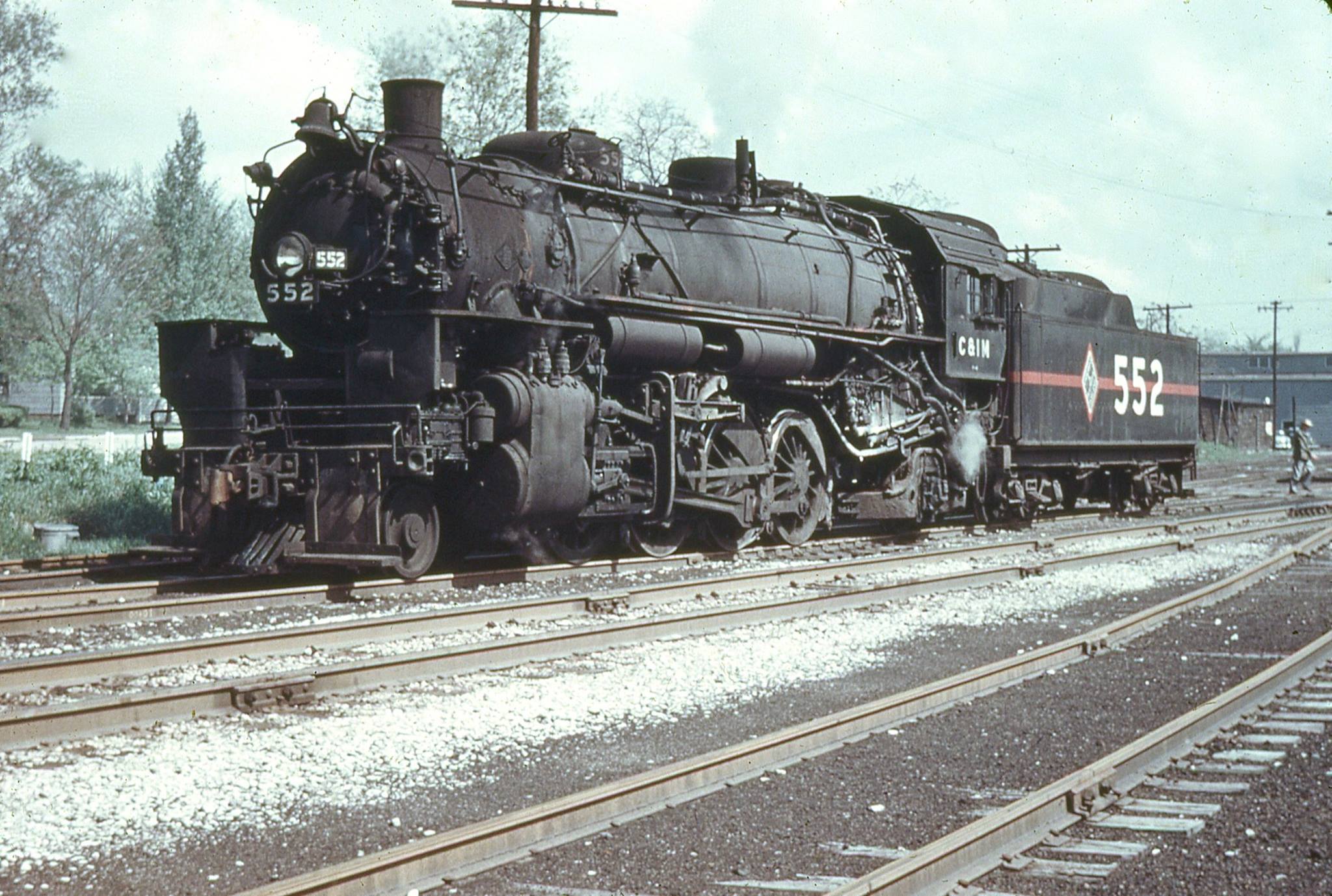 The Chicago & Illinois Midland ran from Peoria south to Springfield (the state capital) and Cimic, then east to Taylorville, Illinois. Total mileage was around 120 (7 miles longer than RF&P by comparison.) For much of its history, the C&IM was owned by utility giant Commonwealth Edison. Most of the traffic was coal. Over the years, coal has moved from mines along the south end of the line to Illinois River docks at Havana and to other carriers at Peoria. As Wyoming coal became more popular, coal moved from connections at Peoria to the docks at Havana.
The Chicago & Illinois Midland ran from Peoria south to Springfield (the state capital) and Cimic, then east to Taylorville, Illinois. Total mileage was around 120 (7 miles longer than RF&P by comparison.) For much of its history, the C&IM was owned by utility giant Commonwealth Edison. Most of the traffic was coal. Over the years, coal has moved from mines along the south end of the line to Illinois River docks at Havana and to other carriers at Peoria. As Wyoming coal became more popular, coal moved from connections at Peoria to the docks at Havana.
C&IM was the last Class 1 railroad to order 4-4-0s. A trio of them were built by Baldwin in 1927 and ’28. Later in the steam era, C&IM bought second hand 2-10-2s from Wabash and Atlantic Coast Line as coal traffic increased. We tend to believe that the “Steam to Diesel Transition Era” unfolded over a long period with the first switchers and streamliners arriving in the late 1930s and the last steam road power retiring around 1957 or so. C&IM was unusual in that it remained all-steam through 1954. When they did switch, it was with a suddenness that could strike panic in the hearts of steam fans. The first EMD switchers arrived in early 1955. Then, in the third week of November, the first SD9 arrived on the property. Within FIVE DAYS steam was gone from the C&IM mainline, leaving a few 0-8-0’s in yard service. On December 5th, the 0-8-0’s were gone too.

C&IM was the last Class 1 railroad to order 4-4-0s. A trio of them were built by Baldwin in 1927 and ’28. Later in the steam era, C&IM bought second hand 2-10-2s from Wabash and Atlantic Coast Line as coal traffic increased. We tend to believe that the “Steam to Diesel Transition Era” unfolded over a long period with the first switchers and streamliners arriving in the late 1930s and the last steam road power retiring around 1957 or so. C&IM was unusual in that it remained all-steam through 1954. When they did switch, it was with a suddenness that could strike panic in the hearts of steam fans. The first EMD switchers arrived in early 1955. Then, in the third week of November, the first SD9 arrived on the property. Within FIVE DAYS steam was gone from the C&IM mainline, leaving a few 0-8-0’s in yard service. On December 5th, the 0-8-0’s were gone too.
Brand/Importer Information: Bachmann Industries (Bachmann Brothers, Inc.) is a Bermuda registered Chinese owned company, globally headquartered in Hong Kong; specializing in model railroading.
Founded in Philadelphia, Pennsylvania, the home of its North American headquarters, Bachmann is today part of the Kader group, who model products are made at a Chinese Government joint-venture plant in Dongguan, China. Bachmann's brand is the largest seller, in terms of volume, of model trains in the world. Bachmann primarily specializes in entry level train sets, and premium offerings in many scales. The Spectrum line is the high quality, model railroad product line, offered in N, HO, Large Scale, On30, and Williams O gauge all aimed for the hobbyist market. Bachmann is the producer of the famous railroad village product line known as "Plasticville." The turnover for Bachmann model trains for the year ended 31 December 2006 was approximately $46.87 million, a slight increase of 3.36% as compared to 2005.
Founded in Philadelphia, Pennsylvania, the home of its North American headquarters, Bachmann is today part of the Kader group, who model products are made at a Chinese Government joint-venture plant in Dongguan, China. Bachmann's brand is the largest seller, in terms of volume, of model trains in the world. Bachmann primarily specializes in entry level train sets, and premium offerings in many scales. The Spectrum line is the high quality, model railroad product line, offered in N, HO, Large Scale, On30, and Williams O gauge all aimed for the hobbyist market. Bachmann is the producer of the famous railroad village product line known as "Plasticville." The turnover for Bachmann model trains for the year ended 31 December 2006 was approximately $46.87 million, a slight increase of 3.36% as compared to 2005.
Item created by: CNW400 on 2022-05-05 15:43:34. Last edited by CNW400 on 2022-05-05 15:44:44
If you see errors or missing data in this entry, please feel free to log in and edit it. Anyone with a Gmail account can log in instantly.
If you see errors or missing data in this entry, please feel free to log in and edit it. Anyone with a Gmail account can log in instantly.


